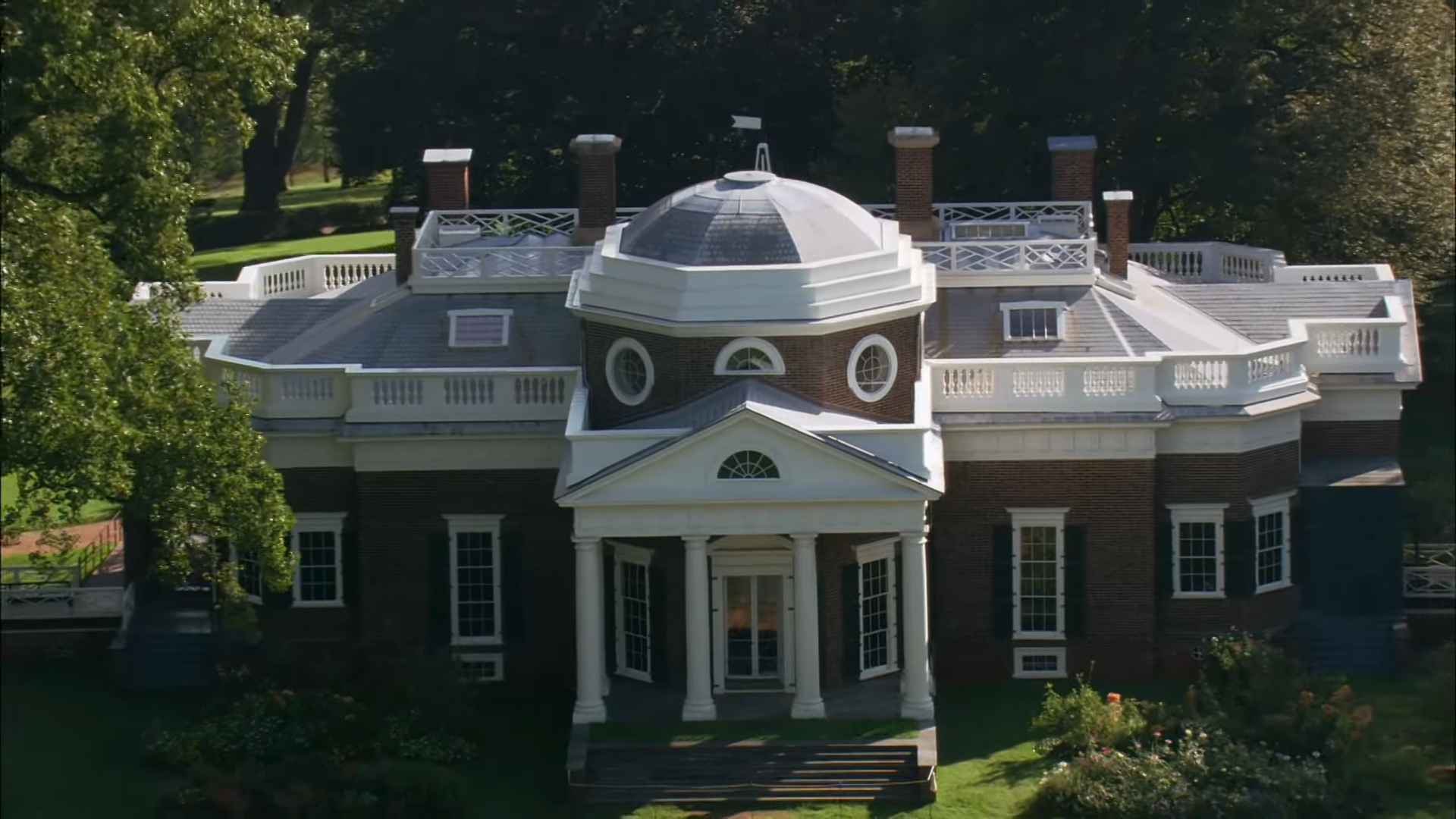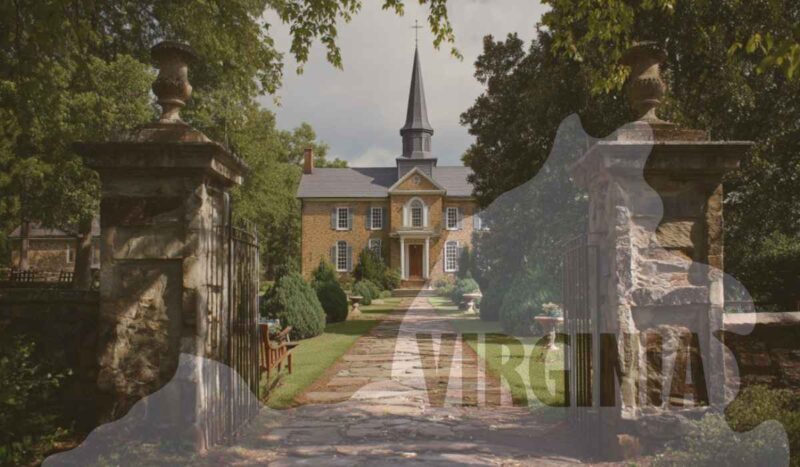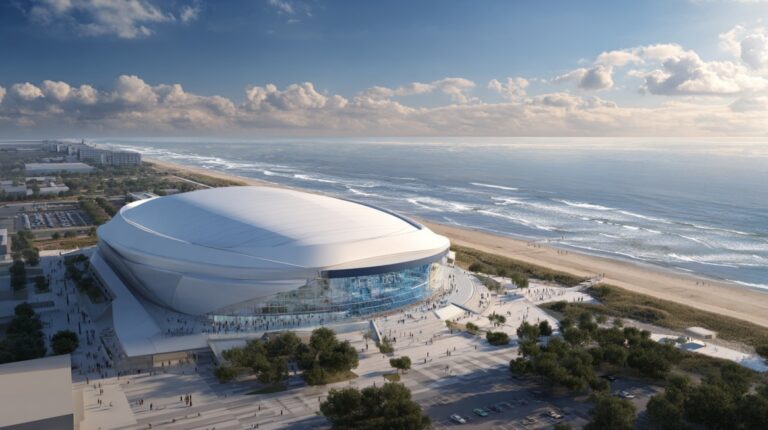Virginia delivers unmatched historical significance as the birthplace of foundational American ideals.
In preparation for the United States’ 250th anniversary in 2026, major commemorative events begin statewide in 2025.
Travelers looking for culturally enriching experiences and fun attractions will find Virginia an ideal destination, blending monumental history with immersive engagement at every turn.
Table of Contents
Toggle7. St. John’s Church, Richmond
St. John’s Church in Richmond offers more than historical resonance; it delivers one of the most stirring theatrical reenactments in the United States.
This is where Patrick Henry delivered his electrifying “Give me liberty or give me death!” speech in 1775, stirring colonists toward revolution.
Visiting in 2025 will allow guests to experience history through a sensory, interactive format that goes far beyond reading plaques or viewing relics behind glass.
Live performances in the original church setting bring the revolutionary debates of the Second Virginia Convention to life.
Performers embody the voices of Henry, George Washington, and Thomas Jefferson as they argue passionately for independence.
The space, charged with historical weight, provides the ideal venue for these reenactments to truly resonate.
- Live reenactments of Patrick Henry’s iconic speech
- Professional actors in 18th-century attire
- Audience participation and post-show discussions
- On-site interpreters narrating events in real-time
Interactive elements have been significantly expanded for 2025.
The “Give Me Liberty” exhibition, held in collaboration with the Virginia Museum of History and Culture and the American Revolution Museum at Yorktown, provides extended engagement before and after the performance.
Panels and touchscreens allow visitors to compare the rhetoric of 1775 to that of modern civil discourse.
Post-performance, guests are invited to participate in guided reflection sessions.
These conversations focus on how freedom, resistance, and national identity continue to evolve. The emphasis is not only on who said what, but why it still matters.
Children and students are encouraged to ask questions and even take part in a moderated debate, echoing the voices of early patriots in a format built for modern civic learning.
Visitors include history buffs, educators, families with children, and interstate movers looking to orient themselves culturally. Everyone walks away having felt something powerful and relevant.
6. Historic Jamestown
Historic Jamestown reveals the earliest roots of European settlement in what would become the United States. Set on the banks of the James River, the site presents a detailed and immersive account of the 1607 English settlement.
Visitors in 2025 can observe live archaeological excavations where new discoveries are still unearthed.
These aren’t quiet exhibits behind velvet ropes, they’re active digs open to public observation, where archaeologists share findings and answer questions on-site.
Guests follow curated pathways leading through the original fort area, rebuilt using historically accurate materials and methods. Historical interpreters dressed in authentic 17th-century attire reenact daily life as it was experienced by colonists.
- Live archaeological digs and real-time discoveries
- Guided tours led by historians and archaeologists
- Interactive exhibitions for students and families
- Hands-on artifact exploration zones
- Living history with period-costumed interpreters
Children are encouraged to take part in Junior Archaeologist programs or handle replica tools, giving them the chance to learn by doing rather than just watching.
Teachers often bring classes for field trips tailored to state education standards, while casual tourists are equally drawn by the powerful blend of scholarship and storytelling.
Adults often find the site’s remaining structures, including the historic church tower, to be deeply moving. It serves as a tangible reminder of perseverance, faith, and the human will to survive in unfamiliar conditions.
Audio guides and mobile apps enhance the experience, providing historical context layered over the physical setting.
5. Monticello

Monticello presents more than the iconic image printed on nickels and textbook pages.
- Innovator
- Philosopher
- President
- Slaveholder
Designed and continuously modified by Jefferson himself, Monticello merges architecture, scientific experimentation, and personal ideology into one unforgettable destination.
Guests walking through the main house encounter Jefferson’s inventions firsthand.
The Great Clock in the hallway measures time and days, while his revolving bookstand and polygraph machine demonstrate his constant push for functional design.
In 2025, enhanced semiquincentennial programming deepens the visitor experience, focusing not only on the Enlightenment ideals Jefferson espoused, but the contradictions in how he lived them.
- New exhibition panels contextualizing Jefferson’s writings and inventions
- Slavery at Monticello tours confronting the estate’s history of forced labor
- Reconstructed living quarters of enslaved individuals and laborers
- Guided tours led by historians, artists, and cultural scholars
- Augmented reality displays connecting past rooms to original usage
Efforts to present the full narrative of Monticello are ongoing. The “Slavery at Monticello” initiative is a core part of the estate’s educational mission.
Visitors can walk Mulberry Row, once home to the enslaved men, women, and children who kept Monticello running.
Families, academics, and interstate movers seeking historical depth all benefit from the site’s candid storytelling.
Informational programs are crafted with balance, letting guests draw their own conclusions based on evidence, voices of descendants, and documented contradictions in Jefferson’s life.
4. 100th Annual Chincoteague Pony Swim
Chincoteague’s Pony Swim is more than a visual spectacle, it’s one of Virginia’s most deeply rooted traditions. The 2025 edition will mark the 100th annual swim, a milestone that brings additional excitement and commemoration to an already beloved summer event.
Scheduled for July 30–31, thousands of spectators will line the Assateague Channel to witness a scene unchanged by time: wild ponies swimming across open waters under the watch of seasoned wranglers.
Managed by the Chincoteague Volunteer Fire Company, the event combines heritage, conservation, and local fundraising in one extraordinary gathering.
Ponies are gently herded across the channel at slack tide, when currents are still, before being rested, paraded, and auctioned to raise funds for veterinary care and the island’s fire services.
- Centennial-themed festivities and commemorative souvenirs
- The Pony Swim event and Saltwater Cowboys parade
- Family-friendly carnival with games, rides, and regional food
- Beach activities, educational talks, and local art shows
- Live music and fireworks celebrating the 100th anniversary
Festivities extend over several days, transforming the island into a buzzing hub of celebration. Families often set up beach chairs the night before the swim to secure a good viewing spot.
Children gasp as the ponies charge through the water, their manes shimmering under the morning sun.
Locals and returning visitors share stories about past swims and favorite ponies, making the atmosphere feel both celebratory and personal.
3. Shenandoah Mansions & The Inn at Vaucluse Spring
Virginia’s historic fabric isn’t limited to museum walls or preserved battlegrounds—it extends into where travelers stay, rest, and reflect.
Two exceptional options in 2025 combine historical ambiance with modern hospitality: Shenandoah Mansions and The Inn at Vaucluse Spring. Both allow guests to absorb Virginia’s cultural heritage without giving up comfort or indulgence.
Shenandoah Mansions, located in Richmond’s Fan District, offers a refined city experience in a repurposed 20th-century estate.
- Marble staircases
- Hardwood floors
- Gas lanterns lining the corridor
Period architecture meets curated art collections, creating a setting once reserved for intellectual salons and artistic gatherings.
- Suite layouts with restored antique furniture
- Rotating gallery walls featuring Virginia artists
- Evening wine tastings in historic parlors
- Optional guided walking tours of the Fan District
For those seeking tranquility, The Inn at Vaucluse Spring offers a quiet retreat in a limestone manor built in 1785.
Tucked among Shenandoah Valley springs and meadows, the inn caters to guests looking for solitude, cuisine, and nature.
Meals are farm-to-table, prepared by resident chefs specializing in regional flavors. Morning yoga sessions take place in garden pavilions, and history tours detail the estate’s original ownership and Civil War-era use.
2. Atlantic Park & ViBe District, Virginia Beach
Atlantic Park in Virginia Beach promises to become a defining destination in 2025. Backed by Grammy-winning artist Pharrell Williams, this revitalized development fuses surf culture, artistic expression, and local storytelling into a space that reflects the spirit of the Atlantic Coast.
With its grand opening set for spring, Atlantic Park will immediately stand out as a creative force centered on both legacy and leisure.
Inspired by Virginia Beach’s surf roots, the development features wave simulators, interactive exhibits, and architectural nods to the city’s mid-century resort heyday.
Visitors can grab a bite at chef-driven eateries, shop at local boutiques, or attend concerts in a venue that highlights regional and national talent.
- Surf-themed installations and artificial wave pools
- Open-air stages with daily live performances
- Dining spaces showcasing Virginia’s culinary identity
- Pop-up retail and community art exhibits
Just steps away lies the ViBe Creative District, a community-driven area where public art meets local enterprise.
Walls are canvases for vibrant murals, sidewalks marked with artist statements, and industrial spaces reimagined into studios, workshops, and pop-up galleries.
Guests can take guided mural walks, sign up for painting or pottery classes, and enjoy rotating exhibits that shift with the seasons.
1. Muscarelle Museum of Art
The Muscarelle Museum of Art, located on the campus of William & Mary in Williamsburg, has long been known for its academic curation and global reach. In 2025, it will take center stage with its monumental exhibition: Michelangelo: The Genesis of the Sistine.
Visitors are invited to examine the drafts, proportions, and revisions that shaped some of the most famous frescoes in human history.
- Planning
- Correction
- Reinterpretation
Features that define the 2025 experience:
- Digitally rendered ceiling views and layered sketch displays
- Audio commentary from global art historians and restoration experts
- Immersive video mapping projecting onto dome replicas
- Interactive drawing stations for guests to try Michelangelo’s techniques
Educational programming plays a central role.
Docents offer family-friendly tours that break down complex artistic concepts, while lecture series hosted by international scholars dig into Michelangelo’s influence on American and European art traditions.
Special evening events feature live choral performances and dramatic readings from Renaissance texts.
The Bottom Line
Virginia’s historical sites in 2025 offer something more than retrospection. They invite meaningful participation in an evolving story.
Blending commemorative events, immersive tours, and hospitality rooted in heritage, the state sets the stage for travel that informs, entertains, and inspires.
Consider building a themed road trip through these destinations.
Linking church pulpits, battlefields, art galleries, and cultural districts can turn one vacation into a national celebration in motion.







